Education
Part Three: Bubble-wise, pound-foolish. Are deep stops dangerous?
In part three, of this four-part series on the history and development of GUE’s decompression protocols, GUE founder and president, Jarrod Jablonski begins by asking the question, “Are Deep Stops Dangerous?” He then goes on to discuss the early rise and experience with bubble models VPM, VPM-B and RGBM in the late 1990s, and the subsequent impact on the tech community, when the U.S. Navy Experimental Diving Unit (NEDU) released their deep stop study in July 2011. Their unambiguous conclusions? The redistribution of decompression stop time from shallow to deep stops increases incidence of decompression sickness in air decompression dives! Additional work followed calling deep stops into question. Jablonski assesses what these all mean for decompression procedures, and presents GUE’s current approach. Feel free to DIVE IN and share your thoughts.

by Jarrod Jablonski
Header photo from the GUE Archives. WKPP dives in Wakulla.
Have you read Part One and Part Two?
Through the 1990s and early 2000s, technical diving was becoming progressively more popular, and the exploits of explorers were being reported around the world. There were numerous reports of greatly adjusted decompression profiles, many of them attributed to the benefit of deep stops. During this period, any mention of dissolved gas algorithms was tantamount to talking about a flat earth. It seemed self-evident to so many people that controlling bubbles just made sense. How could all of those technical divers be talking about adjusting their decompression profiles if there wasn’t something to this deep stop/bubble control concept? Were they safely reducing decompression time, just getting lucky, or perhaps exaggerating their success, whether intentionally or not?
Questions like this encouraged decompression enthusiasts Erik Baker and Erik Maiken to work with researchers like David Yount to refine Yount’s Varying Permeability Model (VPM), extending the early concepts to support bubble management during repetitive, mixed-gas decompression diving. During one planning session, Baker demonstrated to me that VPM mirrored the type of shortened decompression that was eerily similar to the schedules our team had evolved organically. Over time, the early enthusiasm for this new model gave way to more realistic appraisals. Short dives that formed the base of “typical” tech diving–around 75 m/250 ft for about 30 minutes–were resulting in very short VPM decompressions. In fact, the output looked troublesome, causing Global Underwater Explorers (GUE) to delay implementation of VPM for more than a year. When GUE did include VPM, guidance was codified in GUE’s Standards and Procedures document and required that all profiles continue to refer to the original Buhlmann as the reference standard. That requirement remains to this day.
Problems with VPM became more frequent, and decompression sickness (DCS) was being reported somewhat regularly, even among die-hard enthusiasts. Ironically, a calculation error relating to Boyle’s law was discovered, and VPM was adjusted and re-released as VPM-B; although most favored calling it VPM since it was intended as a replacement. VPM was included in a variety of decompression programs and competed with Bruce Wienke’s Reduced Gradient Bubble Model (RGBM). Over time, enthusiasm for the new bubble models eased somewhat with many divers picking and choosing depending upon a given dive. People still tended to believe in the idea of bubble models, albeit with a more cautious view of the application.

Extrapolating theoretical bubble dynamics into real-world application is complex but also deeply intriguing. It also encourages divers to ask if such a paradigm shift might illuminate a deeper truth about the mechanisms at work. Physiologist Brian Hills (1934–2006) became deeply intrigued by the idea, being at least partly inspired by observing pearl divers’ successful decompression in one-third the time presented in commonly accepted U.S. Navy tables. This reduction in time was similar to the claims of some technical divers who also believed the result was influenced by their control of developing bubbles. Both the pearl and tech diver “results” require a great deal of context, which we will save for a more detailed review. These results may well foreground both a flawed process and a unique insight.
Hills commented that:
“Haldane’s calculation method did not say the same thing as the equations he used to formulate diving tables. Haldane and subsequent Naval tables were based upon the axiom that the bends-free diver must be bubble-free. This is demonstrated qualitatively by the diver who develops a case of the bends during ascent. Now knowing that he has bubbles, you would move him deeper as a treatment. On the other hand, if those bubbles had not become manifest as the bends, you would continue to take him shallower, assuming that he was bubble-free.”
Given the complexity, the early difficulty of modeling bubbles was probably to be expected. There are numerous variables involved in developing an effective bubble model. We might speak about micro bubbles that grow from seeds, and where we strive to limit a bubble’s critical radius and the critical volume of allowable bubbles. In making these assessments, modelers must work from lab experiments which strive to determine and then extrapolate what actually happens in the body. Even if they manage to get all the particulars correct, they still remain unclear about how a given bubble may or may not impact a diver. For example, where does the bubble go, and how does this create symptoms? Are the impacts from bubbles mostly or exclusively related to where they come to rest, i.e., when they stop and block blood flow and/or impinge upon a nerve and cause pain? Or, do bubbles cause problems by their presence, signaling the body’s immune response and resulting in collateral symptoms? Even a perfect model of bubble development might fail to develop consistent and useful decompression tables.
The uncertainty revolving around bubble models was nothing new in the technical diving world. Recall that many divers had been regularly modifying their own profiles for years with little certainty. Most divers seemed to believe bubble models had value, albeit more carefully structured than early assessments might have prompted.
The shot that rang across the technical diving community
In July 2011, the Navy Experimental Diving Unit (NEDU) released a deep stop study with the unambiguous conclusion that “REDISTRIBUTION OF DECOMPRESSION STOP TIME FROM SHALLOW TO DEEP STOPS INCREASES INCIDENCE OF DECOMPRESSION SICKNESS IN AIR DECOMPRESSION DIVES.”
There it was, in black and white for all to read. Deep stops not only did not help but they also actually INCREASED the risk of decompression problems. Lest one imagine the issue settled, the protests began almost immediately. The NEDU study did not model the type of decompression used by technical divers, most notably by forgoing oxygen-rich mixes as part of the decompression. Others complained about the use of air, an abomination in some tech circles, and enough for some divers to immediately discount the study. Still others disliked the ascent profile, which placed 44 minutes of decompression between 21 m/70 ft and 15 m/50 ft alone. Some argued that even a conservative use of gradient factors with deep stops would only result in 13 minutes over the same range, leading some to argue that such on-gassing would naturally outstrip any value to deep stops that are excessively long.
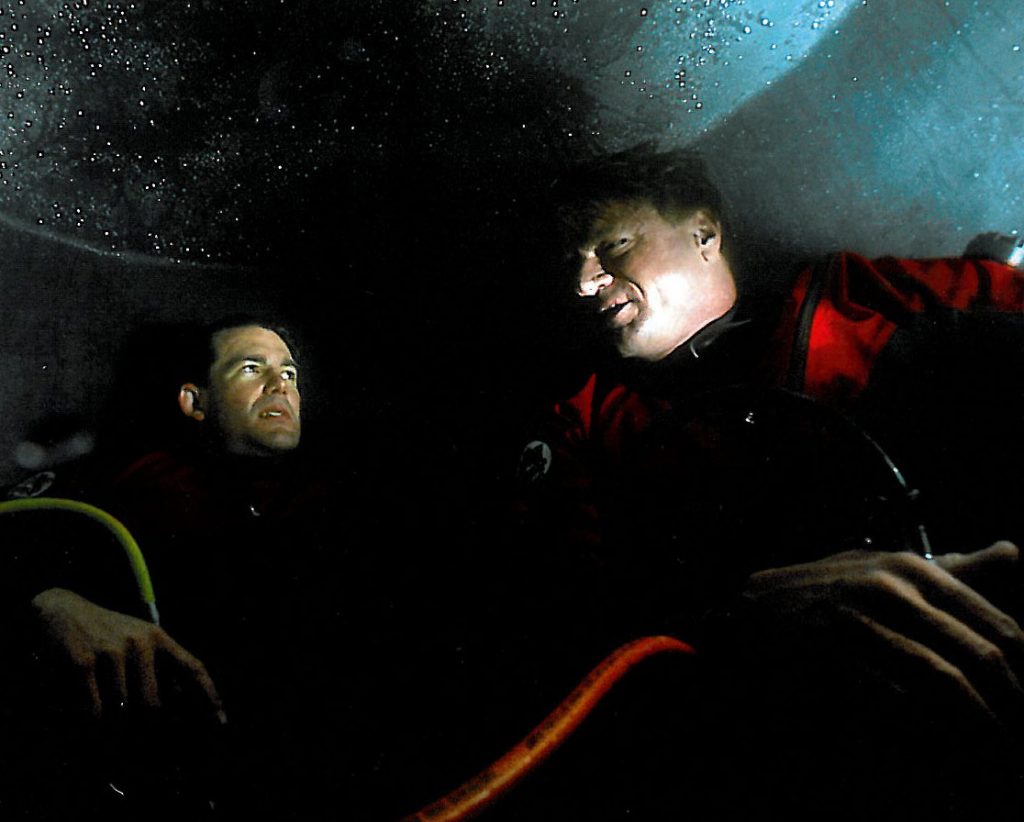
The researchers conducting the NEDU study are exceptionally bright, capable, and well-informed experts. They had excellent reasons for the choices they made, and these have been well defended in various media, perhaps most eloquently in online discussion forums by [popup_anything id=”2896″] and [popup_anything id=”2898″], two giants in the fields of hyperbaric research and treatment, respectively. Both men are among the world’s foremost experts in their respective fields, and anyone of reasonable sense would carefully consider an opinion that challenges their conclusions.
My intent here is not to argue for or against the NEDU study, or even deep stops in general. I will leave that discussion for later, and the final determination belongs to those for whom it is relevant. For now, I hope to summarize the particulars and leave the reader to review the substantial body of information available. What we can say now is that it is unlikely anyone study could convince those that perceive years of success with a given approach. For some, the NEDU study was missing many critical details. One can certainly argue that deep stop efficacy should be independent of these details, but technical divers care less about that aspect than they care more about using deep stops in conjunction with their normal practices. The NEDU study argues, many would say compellingly, that deep stops are not beneficial. We know that because a larger share of divers in the study developed problems while using deep stops than not using these stops. In fact, the research is more compelling given the number and severity of DCS cases. Moreover, there are [popup_anything id=”2903″] that support the NEDU conclusion, while there have not been any studies that support the value of deep stops.
The NEDU study appears to be empirically rational and logistically consistent, though deeply unsatisfying, at least for some. With so many differences between the NEDU study and typical technical profiles, resistance was to be expected. Change can be unsettling, and no doubt some of the resistance can be explained by this discomfort, something known as cognitive dissonance among those that like to label such things. Even a casual review of the discussion forums illustrates the emotional attachment we have to long-standing ideas: Some are gleeful about the news, enjoying the chance to deride those that followed this path, which is an understandable backlash to the uber-confidence of some deep stop advocates. Others are angry, blaming others for duping them, apparently absent a sense of personal responsibility. Between the growing anti-deep movement and the declining pro-deep camps resides a mostly cautious base, with some patient experts helping to channel the discussions. Despite a few unhelpful personal insults, we can be broadly impressed with the ways in which technical divers are processing this new information. Ideally, we would learn from the largely unsubstantiated rush into deep stops enacting a measured exit strategy, especially while managing a few other pesky details relating to the use of deep stops. For example, how should a person convinced by the science against deep stops treat fellow divers? How about the dive buddy relating anxiety over the change? What about those experiencing DCS symptoms in deeper water? The onset of these symptoms can include pain, numbness, and neurological problems. There is a known risk in deeper and longer dives, and the frequency is enough to encourage a [popup_anything id=”2905″] among others. [Ed. note: U.S.Coast Guard regulations require that commercial diving jobs deeper than 91m/300 ft be conducted using saturation diving. Meanwhile, many clients such as BP and Shell Global mandate saturation diving below as little 37m/120 ft].
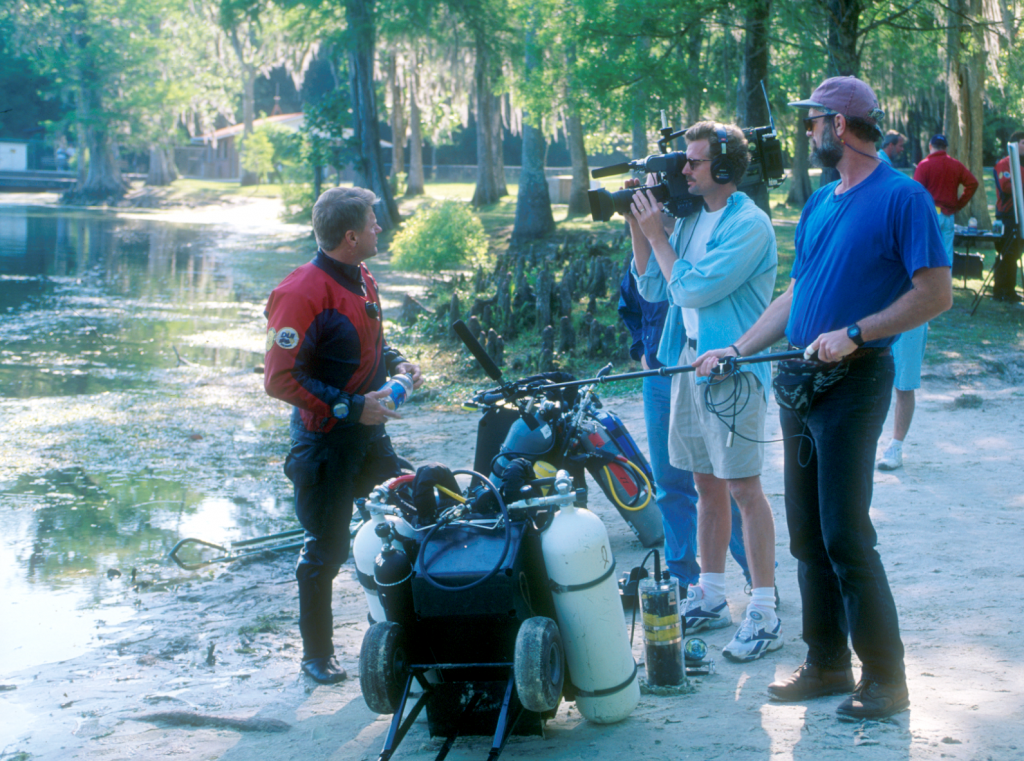
It is problematic to suggest that divers experiencing DCS symptoms at depth ascend. Meanwhile, some of these divers have established protocols, including some version of deep stops, that they believe help manage the problems they are confronting. Put simply, what do you say while in the water and managing a diver that reports decompression problems in deep water during the ascent? Do you tell them to have faith in the balance of currently developing research? More broadly, how should individuals, teams, and organizations manage the variety of competing strategies within their community? In considering this problem, we find unexpected complexity, even reaching beyond the relative simplicity of the deep stop vs. no-deep-stop debate.
Are we in a post-deep-stop world?
During the late 1990s and early 2000s, deep stops experienced great popularity, but almost as quickly as they appeared, they become a black sheep in many circles. That a community can so quickly embrace and then reject an idea is, in many ways, a positive feature of rational humans. True science, when done well, represents the best of this ideal because it takes almost nothing for certain. One develops a hypothesis, tests rigorously, and informs upon that hypothesis. Other researchers hopefully pursue a similar effort, and, over time, we gain confidence in a given idea or we do not. Even longstanding ideas are not technically settled, even though the overwhelming weight of evidence supports that hypothesis.
When considering details regarding decompression or deep stops or any of the variety of the semi-common modifications in the technical diving community, we should maintain some balance in our view. While the rush into deep stops exemplifies the desire of the technical diving community to push past historical barriers, the enthusiasm was likely too hasty, given the lack of evidence and clarity in execution. This kind of initiative, for better or for worse, defines our species. Now some are pushing to accelerate ascents from depth. While this may well be the correct approach, we should manage the transition with a bit more foresight than was previously demonstrated. There are still many unanswered questions in the search to better understand decompression problems.
For the moment, it can be said that deep stops likely do not represent a clear value in accelerating one’s decompression and that they may actually present problems. It is obvious that the deep stop profiles, such as the one tested at NEDU, are not useful and can be dangerous. There are many compelling arguments that these results are directly correlated to the lack of utility in deep stops themselves, and other studies support this view. These individuals are sometimes frustrated by what they perceive as an outdated and unsupported view of evolving decompression science. At the same time, a research study that tests deep stops in a way that appears to be totally removed from their practical use is bound to elicit suspicion. Regardless of our personal conviction for or against an idea like deep stops, we should take the experience of our peers into consideration.
This backdrop of uncertainty requires some accommodation on two primary fronts. First, those engaged in technical dives must weigh the available evidence and make an informed decision about the best way forward. Second, one should respect the experience and choices of those with whom they choose to dive. There are no certainties in decompression, and the divers actually in the water doing the decompression maintain the ultimate responsibility for an associated plan. For GUE, and others, these aspects require careful balancing.
GUE was founded and is managed by leading explorers, regularly conducting aggressive diving projects where lengthy exposure can become a notable liability. Changing weather, thermal problems, or other developments can force a diver to get out of the water as quickly as possible. Meanwhile, GUE is a training organization and maintains the need to establish a conservative approach in support of new technical divers. These new divers must determine, through experience, their individual susceptibility to decompression sickness. All divers should begin this process slowly, adjusting toward more aggressive profiles only if it makes sense based upon need and experience. However, in most cases, it will not make sense for divers to manipulate their decompression to be more aggressive.
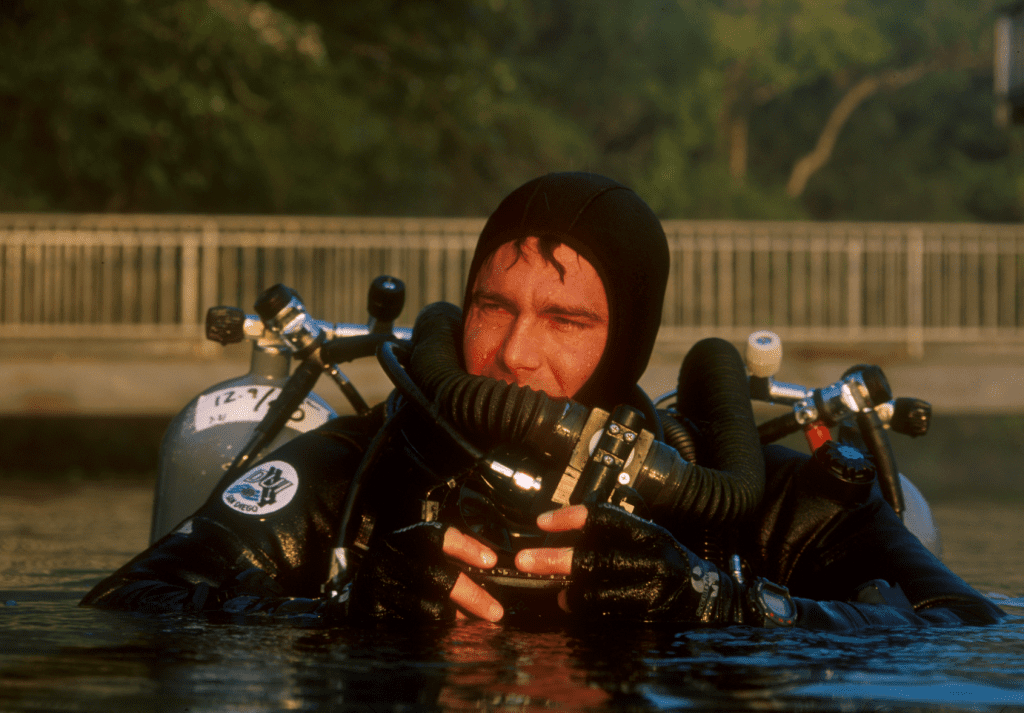
Evaluation of what constitutes an aggressive profile is a big part of what gradient factor methodology hoped to illuminate. To what extent that goal was realized remains an open question, but the use of gradient factors remains extremely common for both deep-stop and anti-deep-stop groups. Those favoring a move away from deep stops favor more aggressive ascents with higher gradients. Meanwhile, some divers resist rapid adjustment to what they perceive has been working. [popup_anything id=”2906″] factor strive to balance these factors while leaving the ultimate decision in the hands of experienced teams. It is very reasonable to act with consideration to prevailing research but we should also remember that most of the details remain unclear, leaving each diver with a burden to determine the best course of action. I would like to assert that these choices look more significant than they are in most cases, as I will detail in later sections. For now, we might ask if [popup_anything id=”2908″], which is related but somewhat different from the removal of deep stops.
A deep stop profile may or may not be less efficient in terms of ascent time, but should its inclusion be strongly resisted? How about during an ascent where divers are experiencing or have experienced problems? If you feel greatly disadvantaged in terms of efficiency, then I would like to create some context. A typical dive to 45m/150 ft for 30 minutes while using a gradient of 20/85 produces a total of two minutes more decompression as compared to a 60/85 profile. Of course, the “problem” with low gradients becomes much more relevant with deeper depths and/or longer bottom times. In this case, adding deeper stops might result in a growing disparity between the total decompression times though this largely depends upon the model and safety factors utilized. Yet, these longer profiles are not conducted by new tech divers or students, and modifications to long and deep profiles ultimately rest with experienced divers making these choices for themselves.
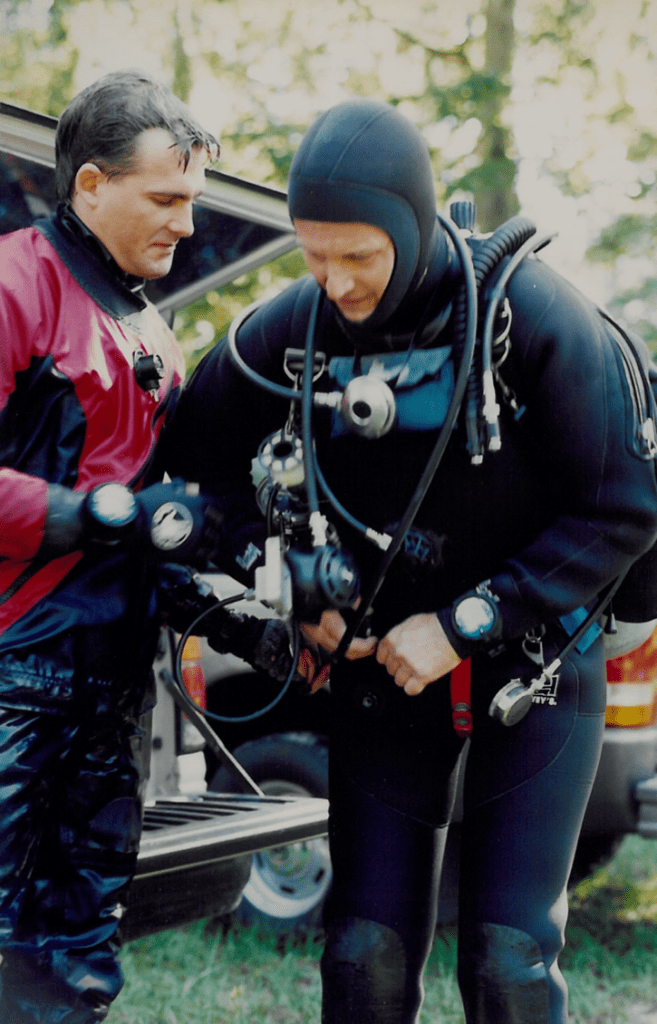
As an organization founded by explorers and with wide-ranging expeditions conducted annually, GUE has always provided notable latitude to experienced divers but has also guided new divers toward conservative decompression exposure. Our experience over 30+ years demonstrates that a diversity of decompression profiles can be “successful.” Yet, we should always push to better define what success looks like. That question, along with some of the more aggressive experiments in our community, highlight an interesting, if not blasphemous, possibility: Are we making progress toward understanding the underlying issues guiding decompression, or are we merely accumulating data? If we are making progress, do we appreciate the nuances enough to properly contextualize the outcomes?
It is clear that advances in decompression knowledge have been significant, and that most individuals can dive with relative assurance that they will not become injured. I do not intend to suggest otherwise. However, I would like to ask if we are certain enough that we should push others toward our own beliefs. Are the details too vague for there to be the best solution that works for everyone? I hope you will join us for the final, part four of our series where we explore some unique, often under-discussed aspects of decompression development.
Note: I hope the reader is able to appreciate my intent in this writing. I am not pushing any agenda, save the idea that open dialogue and respect for the experiences and reports of others is an important part of evolving practices. GUE is strongly committed to standard practices, although an often unappreciated aspect of this commitment is the understanding that some adjustment is natural. The idea is not to create a rigid, unthinking policy but a set of common tools, useful in large part because of their standardization within a community. Those standards can and do evolve, although they should not be changed carelessly unless a meaningful value is established.
Tell us what you think. Should the industry immediately abandon all forms of deep stops? How hard should we push resistant dive buddies? How should we manage those experiencing problems during ascent but finding resolution with the inclusion of deep stops? We welcome your thoughts and want to hear about your experiences.
Dive Deeper
1. Blatteau JE, Hugon M, Gardette B. Deeps stops during decompression from 50 to 100 msw didn’t reduce bubble formation in man. In: Bennett PB, Wienke BR, Mitchell SJ, editors. Decompression and the deep stop. Undersea and Hyperbaric Medical Society Workshop; 2008 Jun 24-25; Salt Lake City (UT). Durham (NC): Undersea and Hyperbaric Medical Society; 2009. p. 195-206.
2. Spisni E, Marabotti C, De FL, Valerii MC, Cavazza E, Brambilla S et al. A comparative evaluation of two decompression procedures for technical diving using inflammatory responses: compartmental versus ratio deco. Diving Hyperb Med 2017;47:9-16.
3. Gennser M. Use of bubble detection to develop trimix tables for Swedish mine-clearance divers and evaluating trimix decompressions. Presented at: Ultrasound 2015 – International meeting on ultrasound for diving research; 2015 Aug 25-26; Karlskrona (Sweden).
4. Doolette DJ, Gerth WA, Gault KA. Redistribution of decompression stop time from shallow to deep stops increases incidence of decompression sickness in air decompression dives. Technical Report. Panama City (FL): Navy Experimental Diving Unit; 2011 Jul. 53 p. Report No.: NEDU TR 11-06.
5. Fraedrich D. Validation of algorithms used in commercial off-the-shelf dive computers. Diving Hyperb Med 2018;48:252-8.
Read the other articles in the series:
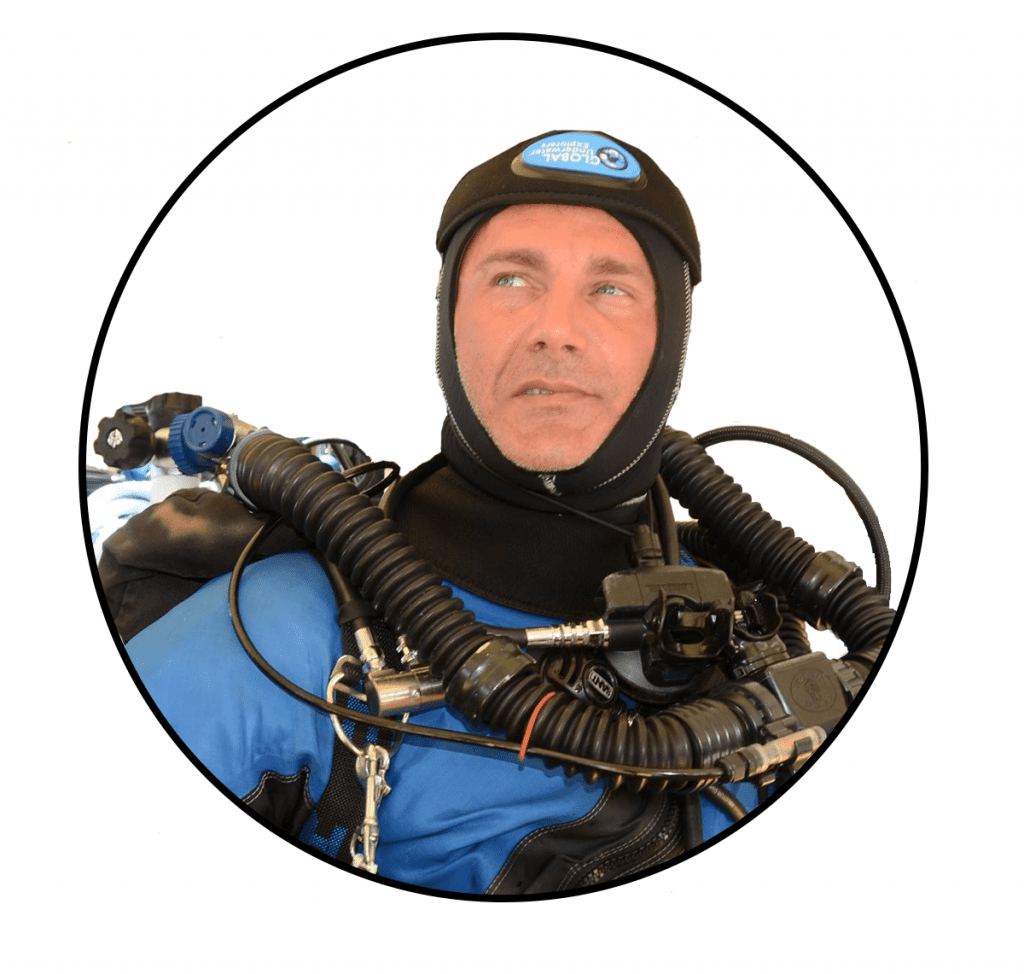
Jarrod is an avid explorer, researcher, author, and instructor who teaches and dives in oceans and caves around the world. Trained as a geologist, Jarrod is the founder and president of GUE and CEO of Halcyon and Extreme Exposure while remaining active in conservation, exploration, and filming projects worldwide. His explorations regularly place him in the most remote locations in the world, including numerous world record cave dives with total immersions near 30 hours. Jarrod is also an author with dozens of publications, including three books.





















































